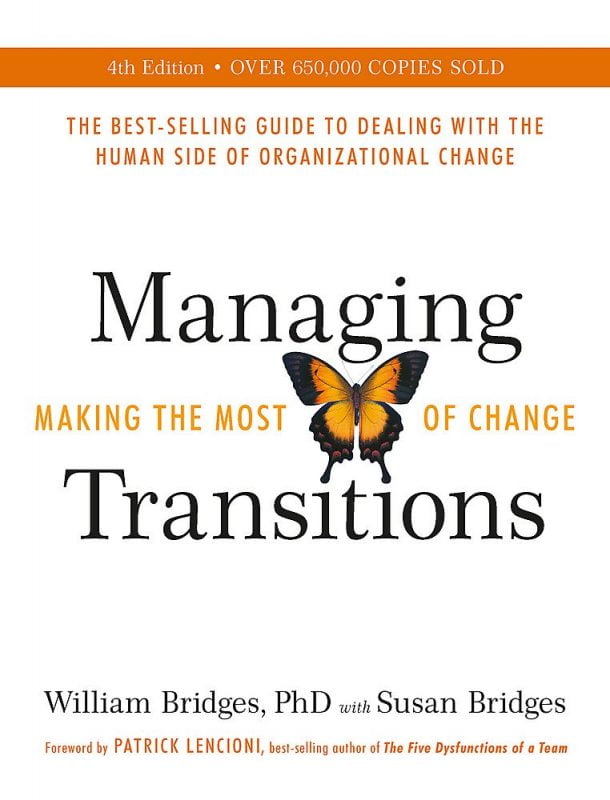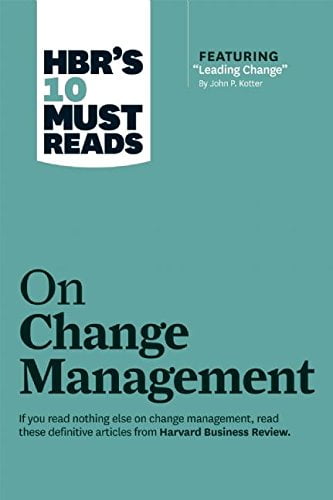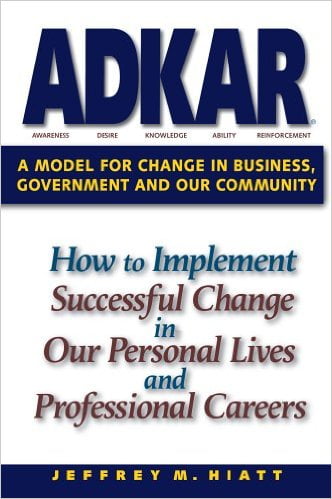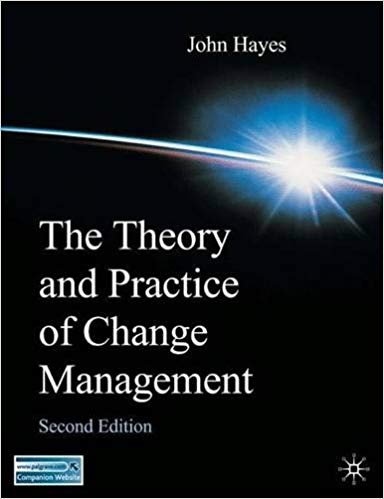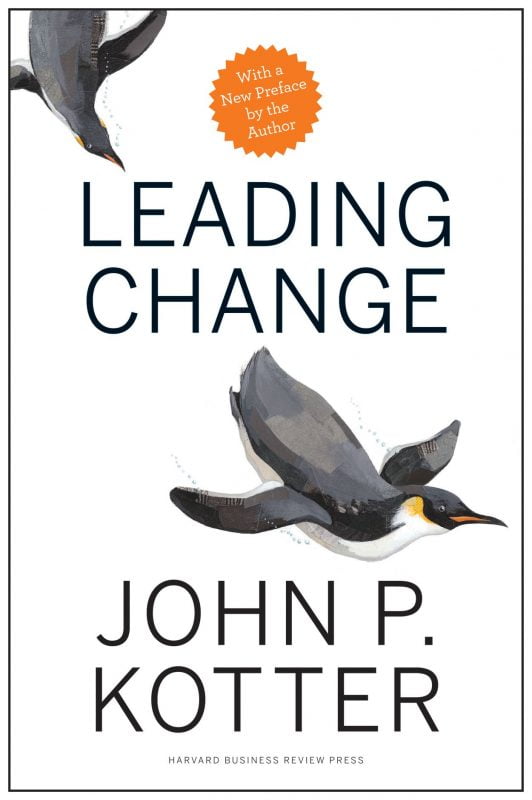Managing Transitions: Making the Most of Change
William Bridges is an internationally known speaker, author, and consultant who advises individuals and organizations in how to deal productively with change. His ten books include an expanded third edition of his best-seller, Managing Transitions (2009), and the updated second edition of Transitions (2004), which together have sold over one million copies. Before that he published The Way of Transition (2000), a partly autobiographical study of coming to terms with profound changes in his own life and transforming them into times of self-renewal. He published Creating You & Co., a handbook for creating a work-life that capitalizes on today's frequent and disruptive changes, and the ground-breaking Jobshift.
For three decades, he has guided thousands of individuals and hundreds of organizations through the maze of the transitions that accompany change. He focuses on the Transition, or psychological reorientation, people must go through to come to terms with changes in their lives. His three-phase model of Endings, Neutral Zone and New Beginnings is widely known. The professional seminars that he launched in 1988 have now certified more than 5,000 managers, trainers and consultants worldwide to conduct Transition Management programs. His later work has focused on bringing the principles of Transition Management into the non-profit world. He has been a frequent keynote speaker at conferences and corporate meetings in the United States and abroad.
Educated originally in the humanities at Harvard, Columbia, and Brown Universities, he was (until his own career change in 1974) a professor of American Literature at Mills College, Oakland, CA. He is a past president of the Association for Humanistic Psychology. The Wall Street Journal listed him as one of the top ten independent executive development presenters in America.
More info →HBR’s 10 Must Reads on Change Management
Most company's change initiatives fail. Yours don't have to.
If you read nothing else on change management, read these 10 articles (featuring “Leading Change,” by John P. Kotter). We've combed through hundreds of Harvard Business Review articles and selected the most important ones to help you spearhead change in your organization.
HBR's 10 Must Reads on Change Management will inspire you to:
- Lead change through eight critical stages
- Establish a sense of urgency
- Overcome addiction to the status quo
- Mobilize commitment
- Silence naysayers
- Minimize the pain of change
- Concentrate resources
- Motivate change when business is good
This collection of best-selling articles includes: featured article "Leading Change: Why Transformation Efforts Fail" by John P. Kotter, "Change Through Persuasion," "Leading Change When Business Is Good: An Interview with Samuel J. Palmisano," "Radical Change, the Quiet Way," "Tipping Point Leadership," "A Survival Guide for Leaders," "The Real Reason People Won't Change," "Cracking the Code of Change," "The Hard Side of Change Management," and "Why Change Programs Don't Produce Change."
More info →ADKAR: A Model for Change in Business, Government and our Community
Why do some changes fail while others succeed?
How can you make sense of the many tools and approaches for managing change?
How can you lead change successfully, both in your personal life and professional career?
After more than 14 years of research with corporate change, the ADKAR model has emerged as a holistic approach that brings together the collection of change management work into a simple, results oriented model. This model ties together all aspects of change management including readiness assessments, sponsorship, communications, coaching, training and resistance management. All of these activities are placed into a framework that is oriented on the required phases for realizing change with individuals and the organization.
The ADKAR perspective can help you develop a "new lens" through which to observe and influence change. You may be working for change in your public school system or in a small city council. You may be sponsoring change in your department at work. You may be observing large changes that are being attempted at the highest levels of government or you may be leading an enterprise-wide change initiative. The perspective enabled by the ADKAR model allows you to view change in a new way. You can begin to see the barrier points and understand the levers that can move your changes forward. ADKAR allows you to understand why some changes succeed while others fail. Most importantly, ADKAR can help your changes be a success. Based on research with more than 1100 companies from 59 countries, ADKAR is a simple and holistic way to manage change.
More info →Change Management: The People Side of Change
This book is a solid, research-based introduction to the discipline of change management, and a primer to catalyze change leadership and competency in managers and executives. Change Management is a practical look at what it means to manage the people side of change, and gives the reader insight into best practices in this area.
More info →The Theory And Practice of Change Management
This is a core textbook for all courses in change management. It examines all of the key theories on organizational change and applies them to organizational settings to demonstrate how strategies can be devised and employed to help manage organizational change and the issues it precipitates. Taking quite a practical approach, students are helped to apply theory to real-world scenarios through the use of experiential learning and cases.
More info →Leading Change
The international bestseller—now with a new preface by author John Kotter.
Millions worldwide have read and embraced John Kotter’s ideas on change management and leadership.
From the ill-fated dot-com bubble to unprecedented M&A activity to scandal, greed, and ultimately, recession—we’ve learned that widespread and difficult change is no longer the exception. It’s the rule. Now with a new preface, this refreshed edition of the global bestseller Leading Change is more relevant than ever.
John Kotter’s now-legendary eight-step process for managing change with positive results has become the foundation for leaders and organizations across the globe. By outlining the process every organization must go through to achieve its goals, and by identifying where and how even top performers derail during the change process, Kotter provides a practical resource for leaders and managers charged with making change initiatives work. Leading Change is widely recognized as his seminal work and is an important precursor to his newer ideas on acceleration published in Harvard Business Review.
Needed more today than at any time in the past, this bestselling business book serves as both visionary guide and practical toolkit on how to approach the difficult yet crucial work of leading change in any type of organization. Reading this highly personal book is like spending a day with the world’s foremost expert on business leadership. You’re sure to walk away inspired—and armed with the tools you need to inspire others.
Published by Harvard Business Review Press.
More info →

